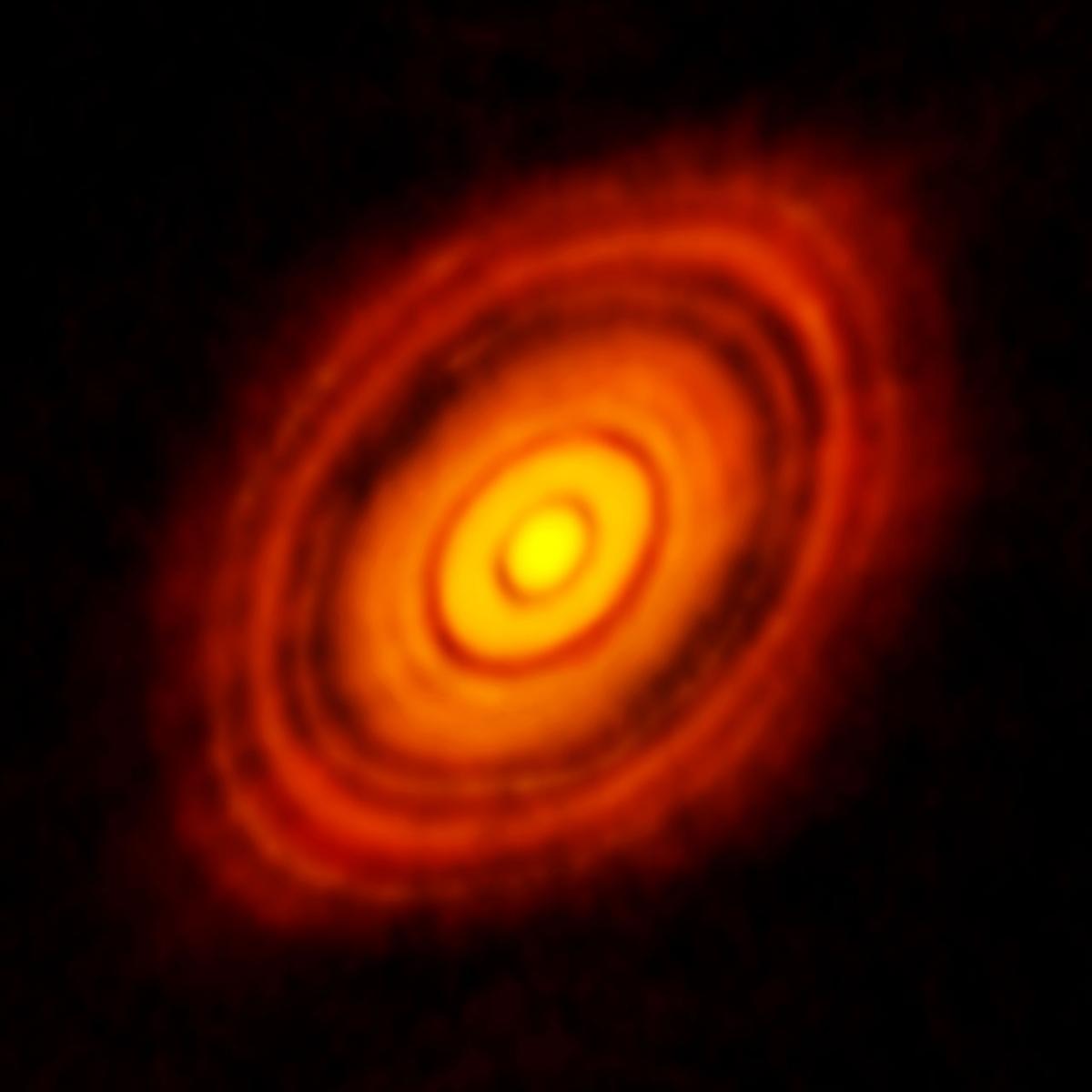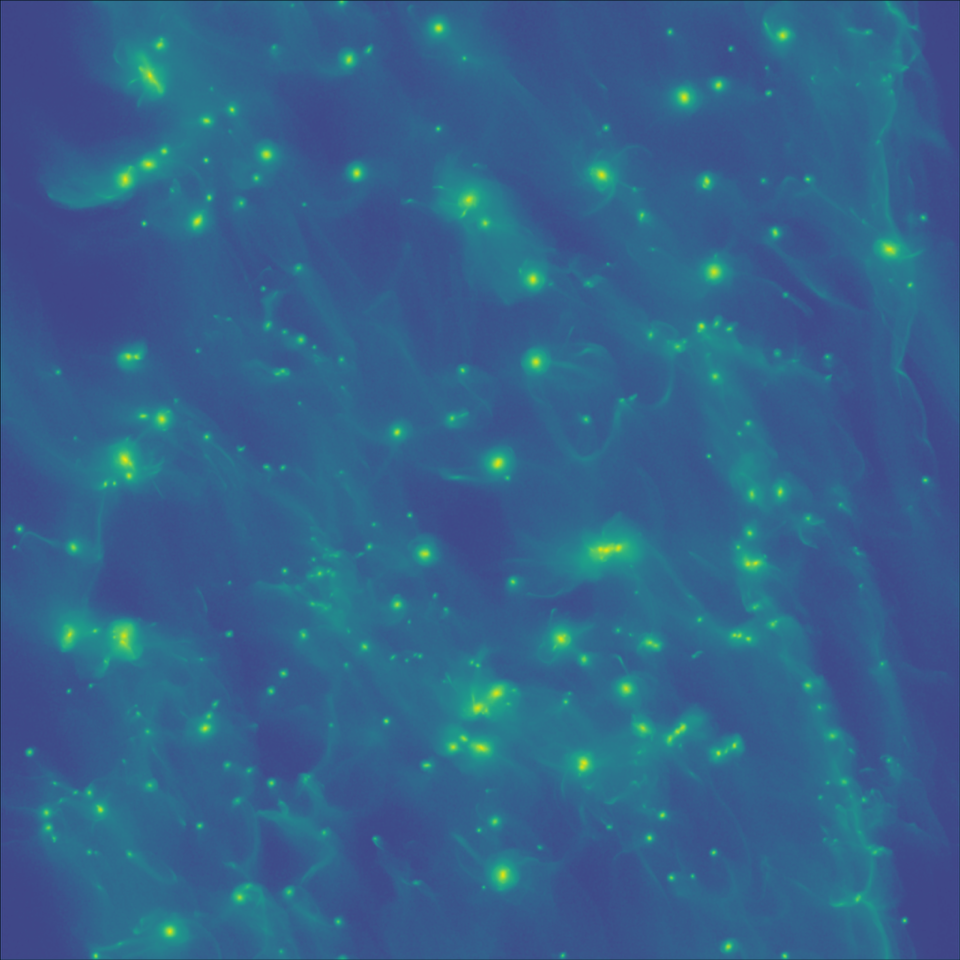 ALMA image of the young star HL Tau and its protoplanetary disk.
ALMA image of the young star HL Tau and its protoplanetary disk.
Credit: ALMA (NRAO/ESO/NAOJ); C. Brogan, B. Saxton (NRAO/AUI/NSF)
The Earth and other planets started out as particles of dust in the disk of a young star. Those particles found each other and started to clump, bound together by electrostatic forces similar to the irritating ones that make plastic film wrappers stick to your hands. The clumps grew into larger, bumpy, comet-like bodies called planetesimals, and eventually became large enough to become true planets, which are spheres held together by their own gravitational fields. To do so, they had to pass through a mysterious transition where they were too small for gravitation to hold them together but too big for sticking forces alone to do the job. How did they make it through? The sticking forces holding a planetesimal together are surface forces. As the body grows, its surface gets smaller and smaller relative to its mass and it becomes less and less sticky. Eventually it reaches a point where stickiness alone shouldn’t be sufficient for it to grow, but it isn’t yet large enough for gravity to take over. That awkward "point" is called the meter size barrier, but it is actually a gulf spanning several orders of magnitude—in some stickiness vs. gravity models of early planet formation, clumps as small as a centimeter in diameter and as large as several kilometers shouldn’t exist.
In 2004, scientists gathered at KITP for the program Planet Formation: Terrestrial and Extra Solar to rethink that and other questions about planetary formation and evolution. One of them was Andrew Youdin (Steward Observatory, Univ. of Arizona). Youdin was just beginning his first postdoc at Princeton. He planned to investigate the meter size barrier in his postdoctoral work and was searching for the right angle on the problem. That angle began taking shape during a conversation with another program participant, Gordon Ogilvie (Univ. of Cambridge). Protoplanetary disks are about 99% gas and only 1% dust; at the time, most mathematical models of the gas’s behavior considered only the gaseous component’s modes, the oscillations in its behavior that occur when it is disturbed by various forces. Ogilvie suggested looking at what happens to the gas’s oscillations when its interactions with dust were included in the model.
 Andrew Youdin
Andrew Youdin
Credit: University of Arizona
Youdin started building the model and made rapid progress. He explains: "I found that the well-known equilibrium state of dust radially drifting through gas (due to large scale pressure gradients) is unstable to what we called the ‘streaming instability,’ [a fluid-mechanical phenomenon involved in other astrophysical processes] which produces particle clumping to aid planet formation." Essentially, the dust particles in a protoplanetary disk rotate slightly faster than the gas, which in turn causes a drag force on the dust. When the dust particles slow down, they begin to accelerate toward the planet. "It turns out," Youdin continues, "that this falling-in happens fastest for things that are around a meter in size, so this meter size barrier for things sticking is also a meteor size barrier for falling into the star."
This would seem to add to our difficulties, but the streaming instability model also includes the gas’s oscillations. The gas pushes back on the dust particles, and the new model showed that considering the back-reaction yields a positive feedback of sorts. "The effect of particles starting to clump together is to create a reaction in the gas that causes more particles to come together."
 Dense pebble clumps formed by the streaming instability after they have started to collapse into 10-100km planetesimals
Dense pebble clumps formed by the streaming instability after they have started to collapse into 10-100km planetesimals
Credit: Rixin Li (Cornell) and Andrew Youdin (U. of Arizona)
The streaming instability model demonstrated that dynamical effects play a large role at the early stages of planetesimal formation, upending previous views that particle sticking was the only important mechanism. It grew into one of the 21st century’s leading ideas on planet formation and has spawned a sub-field of its own. "Numerical simulations of the streaming instability (now with much more physics included than the original analysis) are now a sub-field of their own, with a code comparison project currently in the works!"
Grateful for his seminal advice, Youdin had asked Ogilvie if he wanted to join that original paper, which has now been cited nearly 800 times. "Claiming that he had only given me obvious (to him!) advice, he declined." Ogilvie’s choice could be called humble, even generous. He was a relatively senior and well- recognized scientist and Youdin was just getting started. "It’s very much in the spirit of what KITP is," Youdin says. " You don’t come trying to keep secrets; it’s a place people come to share ideas."
by Maggie Sherriffs
KITP Special Programs & Evaluation Manager
